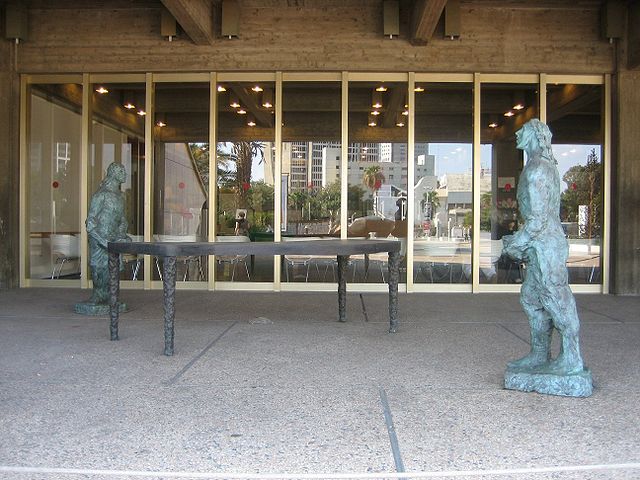Top Qs
Timeline
Chat
Perspective
Sandro Chia
Italian sculptor From Wikipedia, the free encyclopedia
Remove ads
Sandro Chia (born 20 April 1946) is an Italian painter and sculptor.[2] In the late 1970s and early 1980s he was, with Francesco Clemente, Enzo Cucchi, Nicola De Maria, and Mimmo Paladino, a principal member of the Italian Neo-Expressionist movement which was baptised Transavanguardia by Achille Bonito Oliva.[3]

Remove ads
Life
Chia was born in Florence, in Tuscany in central Italy, on 20 April 1946.[4][2][a] He studied at the Istituto d'Arte di Firenze from 1962 to 1967,[1] and then, until 1969, at the Accademia di Belle Arti di Firenze.[2] He then travelled in Europe, in Turkey and in India.[5][4] He settled in Rome in 1970, and began to show work in the following year.[5][4] He spent the winter of 1980–1981 in Mönchengladbach, in Nordrhein-Westfalen in West Germany, on a study grant.[2] Later that year he moved to New York in the United States, where he lived for more than twenty years.[5][6] In 1984–1985 he taught at the School of Visual Arts in Manhattan.[1]
Remove ads
Work
Chia's early work tended towards Conceptualism, but from the mid-1970s he began to turn towards more a figurative approach.[5][4] In June 1979 Paul Maenz showed work by Chia, Francesco Clemente, Enzo Cucchi, Nicola De Maria and Mimmo Paladino at his gallery in Cologne, in Germany.[7] In an article in Flash Art in the same year, the critic Achille Bonito Oliva characterised the group as a new art movement, which he called "Transavanguardia".[7]
His work has been exhibited in a solo or group shows in a number of museums, among them: The Solomon R. Guggenheim Museum in New York in 1983; the Metropolitan Museum of Art in 1984; the Nationalgalerie in Berlin in 1992; the Villa Medici in Rome in 1995; the Magazzini del Sale in Siena in 1997; the Galleria Civica di Arte Contemporanea in Trento in 2000; Palazzo Pitti in Florence in 2002; the Duomo of Sant'Agostino in Pietrasanta in 2007; and the Galleria Nazionale d'Arte Moderna in Rome in 2009–2010.[5] He participated in the Biennale di Venezia in 1984 and 1988.[5]
Remove ads
Notes
- The Enciclopedia Italiana gives a different date of birth, 26 February 1946.[1]
References
Wikiwand - on
Seamless Wikipedia browsing. On steroids.
Remove ads
